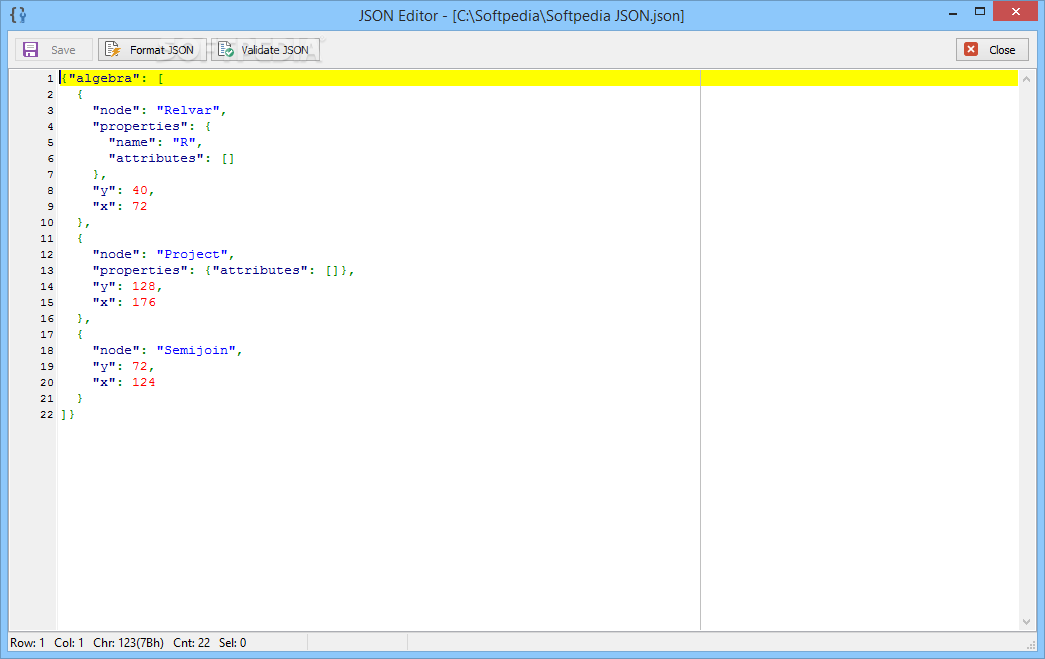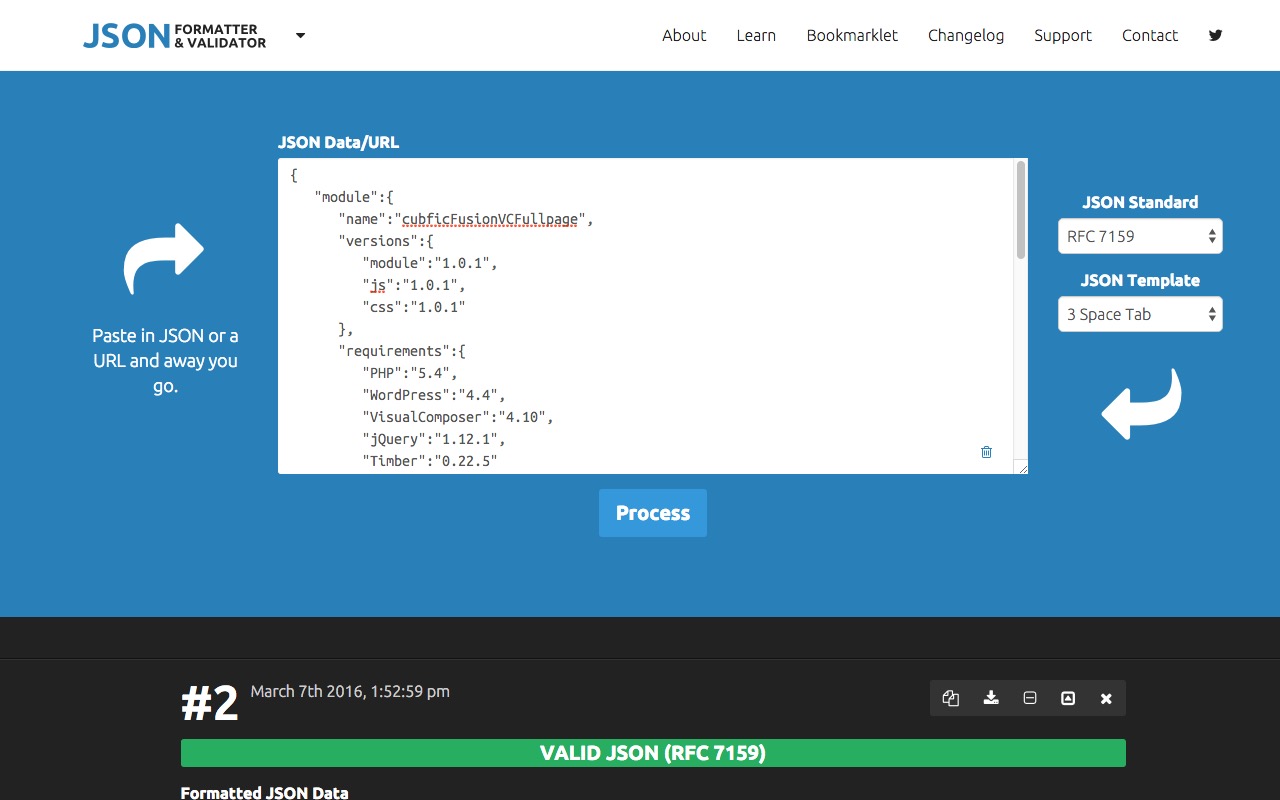


This example demonstrates how you can use the JSON Formatter Snap to render groups data from upstream Snaps such as Group By Fields Snap. Using JSON Formatter Snap to render outputs from Group By Snaps
#JASON FORMATTER FULL#
Execute only: Performs full execution of the Snap during Pipeline execution without generating preview data.ĭisabled: Disables the Snap and all Snaps that are downstream from it.Subsequently, performs full execution of the Snap (unlimited records) during Pipeline runtime. Validate & Execute : Performs limited execution of the Snap, and generates a data preview during Pipeline validation.Select one of the three modes in which the Snap executes. For more information, see the Input Schema Types example. Select this checkbox to enable the Snap to format/parse the Snaplogic-specific syntax indicating objects of the special types, such as byte arrays and date objects in JSON. If you select None, then the schema is not sampled. The performance impact on the Pipeline execution/validation is greater, the larger the sample size is. If the schema differs from document to document, then choose a larger size ( Medium or Large) to attain a more accurate sampling of your schema. For example, if the schema is uniform across the documents, then choose Small. The sizing that you choose depends on the uniformity of the source schema. Select the size of the number of initial input documents to be used when deriving the schema to be added to the binary output header. Select this checkbox to format the output to make it more readable/printable. Select this check box along with Format each document check box and set the Content field to $group to output one document per group with each member in the group as a separate JSON line. Select this checkbox to ignore empty stream when no document is received at the input view throughout the Pipeline execution.ĭeselect this checkbox to enable the Snap to write an empty array to the output stream. See Filtering Output Data Using the JSON Formatter Snap's Content Setting further in this page for filtering the input data based on the Content field. For example, $group, $payload or $emp_salary.

Specify the input object or field whose data must be written to the output stream. When the "Format each document" option is enabled, the headers are computed separately for each binary output.Įnter the function to be used to transform the data such as combine, concat or flatten.Įnter in the target JSON path where the value from the expression will be written.Įxample: $person.firstname to write the field ' firstname' of the ' person' object. When this Snap is configured to output a single binary document, the headers are computed from the first input document. For example, a 'content-location' property added to the header in this Snap can be referenced in the file name property of a File Writer snap with the expression: $. The properties in the header of a binary document can be accessed in expression properties of downstream Snaps. Use this field set to add properties to the binary document's header. The Pipeline should be validated once when the schema file has been uploaded in order for the schema to be visible in the upstream Snap.


 0 kommentar(er)
0 kommentar(er)
